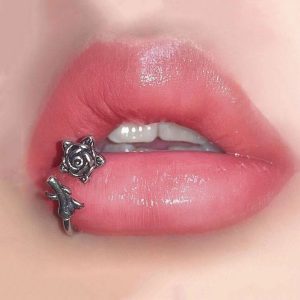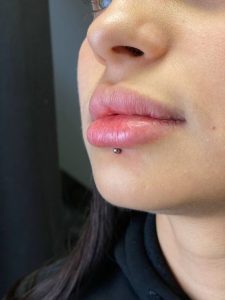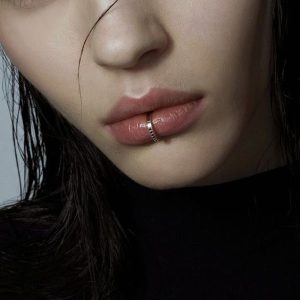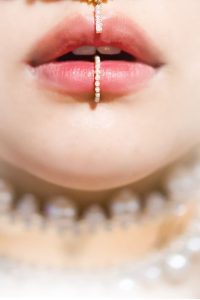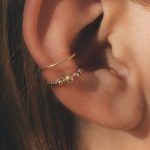Lip piercings are a popular form of body modification that can add a touch of edge or personality to your look. There are many different types of lip piercings, each with its unique placement and style. This article will explore some of the most common lip piercings to help you decide if a lip piercing is right for you and, if so, which type might suit you best.
It’s important to consider all factors before getting a piercing, including the risks and aftercare involved. Always consult with a professional piercer to ensure a safe and sanitary piercing experience.
Considering Lip Piercings
Here are some things to think about before getting a lip piercing:
-
Age: Lip piercings typically have an age requirement. In many places, you must be 18 or older to get pierced without parental consent.
-
Anatomy: Not all lip piercings are suitable for everyone’s anatomy. A professional piercer can assess your suitability for a specific piercing.
-
Lifestyle: Lip piercings may require lifestyle changes during healing, such as avoiding certain foods and activities.
-
Pain tolerance: Lip piercings can vary in terms of pain level. Consider your pain tolerance when choosing a piercing location.
-
Risks and aftercare: Lip piercings, like any piercing, carry risks like infection and allergic reaction. Aftercare is crucial for proper healing.
Common Lip Piercings
There are many different lip piercings, but here are some of the most popular:
-
Labret: This piercing goes through the center of the lower lip below the vermilion border (red part of the lip). It’s a versatile piercing that can be accented with a labret stud or ring.
-
Monroe: Also called a Marilyn Monroe piercing, this one goes through the upper lip to the right of the center. It’s named after actress Marilyn Monroe, who had a beauty mark in a similar location.
-
Madonna: Opposite the Monroe piercing, the Madonna pierces the upper lip to the left of the center.
-
Medusa: This piercing goes through the dip in the upper lip, in the philtrum area between the nose and the lip.
-
Vertical Labret: This piercing goes through the bottom lip vertically, entering below the vermilion border and exiting in the center of the chin.
-
Snake Bites: Two symmetrical piercings on either side of the lower lip, usually with labrets.
-
Spider Bites: Similar to snake bites, but with piercings closer together towards the center of the lower lip.
-
Dolphin Bites: Two symmetrical piercings on the upper lip, usually near the corners.
-
Horizontal Labret: This piercing goes through the lower lip horizontally, off-center to one side.
This is not an exhaustive list, and there are many other variations and combinations of lip piercings.
Finding a Professional Piercer
If you’re considering a lip piercing, it’s crucial to find a reputable and experienced piercer. Here are some tips for finding a good piercer:
Ask for recommendations:
Talk to friends or family who have piercings and ask for recommendations.
Read online reviews:
Look for reviews of piercing studios in your area.
Check credentials:
Ensure the piercer is a member of a reputable piercing association and has a valid business license.
Review portfolio:
Look at the piercer’s online portfolio or social media pages to assess their experience and hygiene standards.
During consultation:
Discuss your desired piercing, aftercare routine, and any concerns you may have. A professional piercer will answer your questions thoroughly and ensure you understand the procedure fully.
By following these tips, you can increase your chances of finding a qualified piercer who prioritizes safety and hygiene.
Lip piercings can be a stylish and unique form of body modification, but it’s important to carefully consider all the factors involved. Understanding the different types of lip piercings, the risks and aftercare involved, and how to find a reputable piercer empowers you to make an informed decision.
If you decide to move forward, prioritize finding a professional piercer who will ensure a safe and sanitary piercing experience.
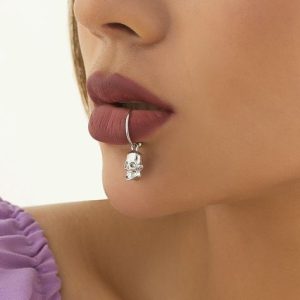
Lip Piercings: Jewelry and Aftercare Considerations
Once you’ve decided on a lip piercing and found a reputable piercer, there are other things to consider! Here’s a look at jewelry options and aftercare:
-
Jewelry options: Lip piercings can be adorned with various jewelry, such as labrets, studs, rings, and barbells. The type of jewelry will depend on the specific piercing placement. Your piercer can advise you on suitable options.
-
Aftercare: Proper aftercare is crucial for a smooth healing process. This typically involves cleaning the piercing regularly with a saline solution and avoiding irritants like spicy foods or rough contact.
Here are some general aftercare tips to keep in mind:
-
Cleaning: Clean your piercing with a sterile saline solution or a piercing aftercare solution recommended by your piercer. Clean it gently twice a day and after eating or drinking.
-
Oral hygiene: Maintain good oral hygiene by brushing your teeth twice a day and flossing regularly. This helps reduce bacteria in your mouth, which can irritate the piercing.
-
Avoid irritants: Avoid spicy foods, alcohol, smoking, and rough contact with the piercing during healing. These can irritate the piercing and slow down healing.
-
Listen to your body: If you experience any unusual swelling, redness, or persistent pain, consult a doctor or professional piercer immediately.
Lip Piercings: Risks and Considerations
Lip piercings, like any body modification, carry some risks. Here’s what to consider:
-
Pain: Lip piercings can vary in terms of pain level. Discuss pain tolerance with your piercer.
-
Infection: Infection is a risk with any piercing. Proper aftercare is crucial to minimize this risk.
-
Allergic reaction: You could be allergic to the jewelry material. Discuss material options with your piercer.
-
Dental issues: Lip piercings can potentially damage teeth or gums if not done correctly or if jewelry is not appropriate.
-
Difficulties with activities: Lip piercings may interfere with certain activities like playing contact sports or playing some instruments.
-
Rejection: In some cases, the body may reject the piercing and push the jewelry out.
Conclusion
Lip piercings can be a stylish and unique way to express yourself. By understanding the different types of piercings, the risks involved, and the aftercare requirements, you can make an informed decision. Remember, it’s important to prioritize safety and find a reputable piercer who will ensure a professional and sanitary piercing experience.
This article provides a general overview of lip piercings. It is not a substitute for professional advice. Always consult with a qualified piercer before getting any piercing.

